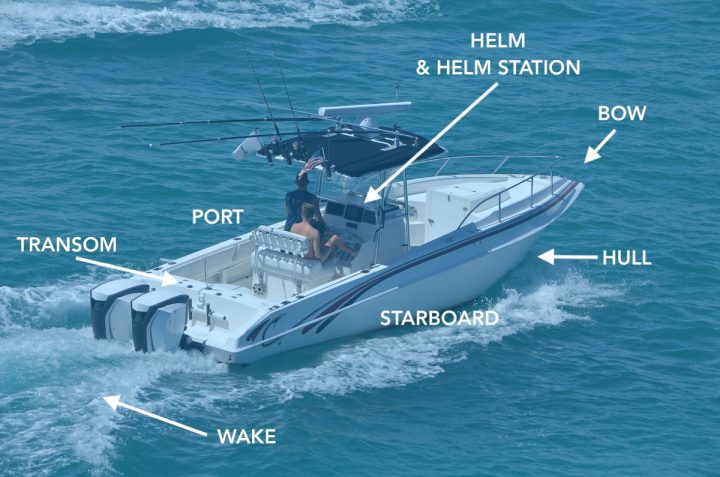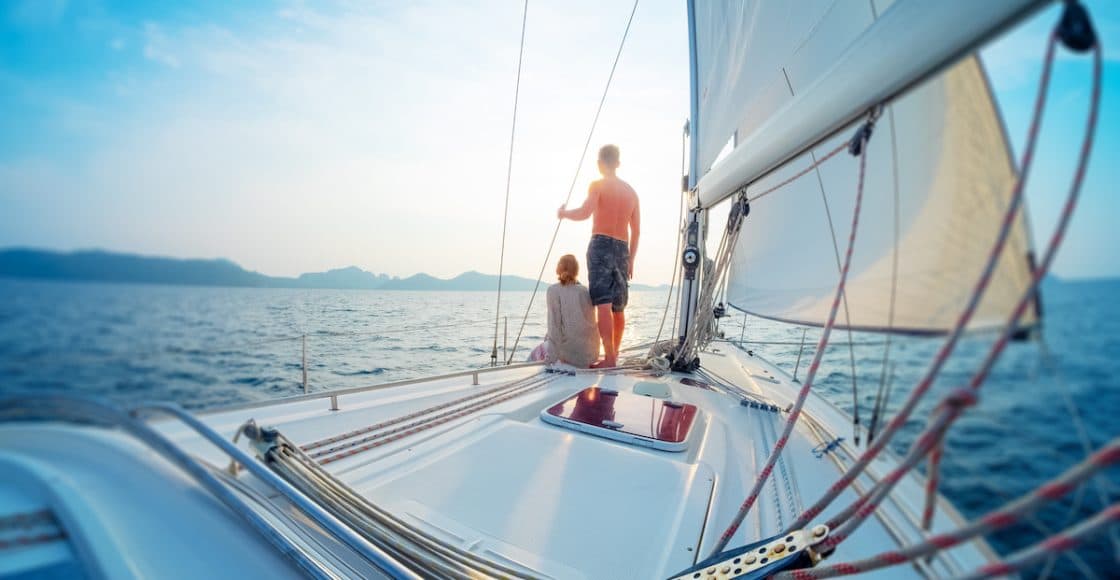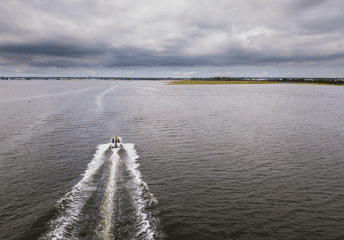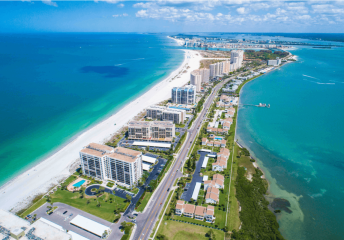50 Nautical, Sailing & Boat Terms for Beginners
Last Updated on September 29, 2023 by Boatsetter Team
Boating has its own vocabulary and if you’re going to be spending time on the water, you should understand a few basic boat terms. Knowing these will make you safer as well as more useful whether boating on your own, chartering or helping friends on their boat.
Let’s divide these words into basic nautical terms and specific sailing terms, listed in alphabetical order.
Ready to Hit the Water? Find Local Boat Rentals Near You
30 Commonly Used Nautical & Boating Terms
Here are a few expressions you’ll hear aboard both a powerboat and sailboat, or even at the dock before boarding your boat rental or charter.
- Aft – the direction toward the back or stern of a boat.
- Ashore – not on a boat but on land or a dock.
- Ballast – extra weight laid low in a boat to provide stability.
- Beam – the width of a boat at its widest point, usually the middle.
- Bow – the front of a boat. Multihulls like catamarans have more than one bow.
- Bunk – a built-in bed on a boat.
- Cabin – the sleeping accommodations on a boat.
- Cockpit – the main seating area of a boat that may also include the helm station.
- Crew – the people or staff that help drive and manage the boat.
- Deck – the top or horizontal structure that is laid over the hull of a deck.
- Dock line – the ropes used to tie a boat to a dock.
- Fender – a rubber, vinyl or foam bumper used to protect the boat at a dock; often referred to by novice boaters as “bumpers.”
- Forward – the direction toward the front or bow of a boat.
- Galley – the kitchen on a boat. It can be inside or out on deck.
- Head – the toilet or bathroom on a boat.
- Helm – the boat’s steering mechanism. It can be a tiller or a wheel.
- Helm station – the area where from which you command or drive a boat.
- Hull – the body or shell of a boat including the bow and stern.
- Keel – the longitudinal structure at the bottom of the hull and generally on the centerline. The keel helps with stability and tracking.
- Knot – either various loops tied in a line or a unit of speed which equals one nautical mile per hour.
- Line – any rope on a boat is referred to as a line – not a rope.
- Nautical mile – a unit of measurement used on the water. A nautical mile is approximately 1.2x a statue mile.
- Onboard – on a boat whether on deck, on the cockpit or below.
- Port – the left-hand side of a boat when you’re facing forward or toward the bow.
- Rudder – an appendage below the boat that is controlled by the wheel or tiller to steer the boat. A boat may have more than one rudder.
- Starboard – the right-hand side of a boat when you’re facing forward.
- Stern – the place at the back of a boat.
- Transom – the actual structure of the back edge of a boat.
- Wake – the turbulence left behind a moving boat.
- Waterline – the place where the hull of a boat meets the surface of the water.

20 Sailing & Sailboat Terms
Within boating, sailing has its own specific vernacular. You’ll want to understand it before you step aboard a sailboat to help crew or when taking a lesson.
- Apparent wind – the combination of true wind and the motion of the boat at the time. It’s the wind you feel onboard.
- Boom – the horizontal pole which extends from the mast aft. It holds the bottom of the mainsail.
- Ease – to adjust sails outward or away from the centerline of a boat.
- Halyard – the line used to raise a sail whether a mainsail or a headsail.
- Headsail – a sail that is forward of the mast. It can be a genoa, a jib, a staysail or a small storm sail.
- In irons – technically a point of sail when you’re head-to-wind meaning the bow is pointing directly into the true wind and the boat is unable to maneuver.
- Jibing (also spelled gybing) – changing direction where the stern swings through the eye of the wind.
- Leeward – the direction away from where the wind is blowing.
- Mainsail – the primary sail on a boat which is usually attached in some way to the mast and boom. On most sailboats it’s the primary source of power.
- Mast – the vertical pole that supports the sails. The mast itself is supported by the rigging.
- Points of sail – the boat’s direction under sail relative to the true wind. The points of sail are: close-hauled, close reach, beam reach, broad reach and dead run.
- Reefing – shortening or reducing the area of a sail to de-power a sailboat usually used in a strong wind.
- Sheet – the line that controls the angle of a sail. There are mainsheets, jib/genoa sheets and others.
- Shroud – a part of the boat’s rigging that supports the mast from side-to-side
- Stay – a part of the boat’s rigging that supports the mast fore and aft.
- Tacking – changing direction under sail where the bow swings through the eye of the wind.
- Trim – to adjust sails inward or closer to the centerline of a boat.
- True wind – the actual wind that is blowing – both direction and speed.
- Winch – a rotating drum used to help control lines with a lot of pressure on them. A winch is cranked with a winch handle.
- Windward – the direction from where the wind is blowing.
Browse Available Sailboat Rentals Near You

Zuzana Prochazka is an award-winning freelance journalist and photographer with regular contributions to more than a dozen sailing and powerboating magazines and online publications including Southern Boating, SEA, Latitudes & Attitudes and SAIL. She is SAIL magazines Charter Editor and the Executive Director of Boating Writers International. Zuzana serves as judge for SAIL’s Best Boats awards and for Europe’s Best of Boats in Berlin.
A USCG 100 Ton Master, Zuzana founded and manages a flotilla charter organization called Zescapes that takes guests adventure sailing at destinations worldwide.
Zuzana has lived in Europe, Africa and the United States and has traveled extensively in South America, the islands of the South Pacific and Mexico.










